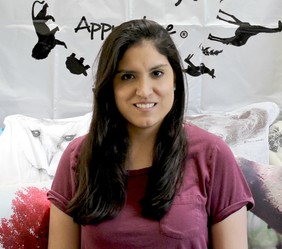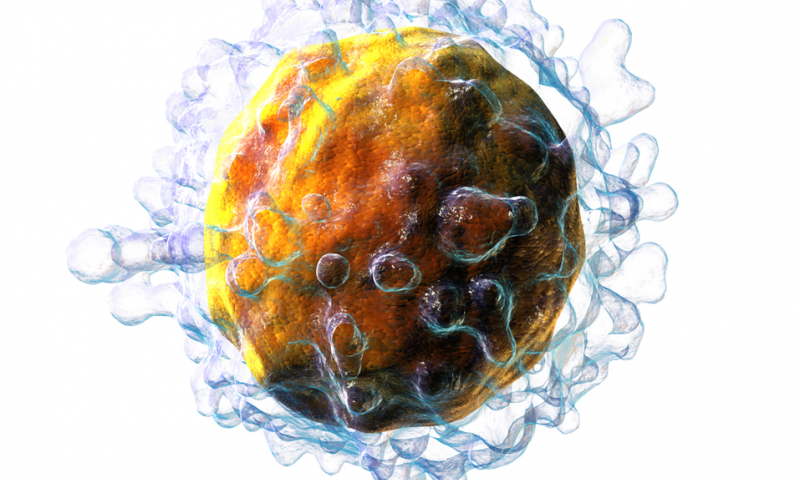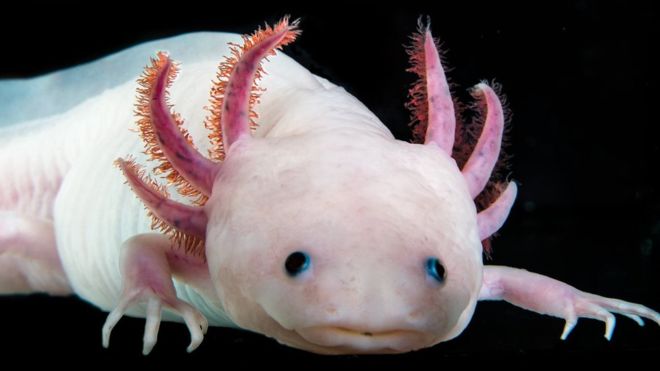 Sofía G. Martínez Villalpando Sofía G. Martínez Villalpando If you have read my blog posts or seen my videos, I typically talk about science, animals, arts, and even critiques of tv shows or movies I like. However, I want to take this opportunity to share a different story, how a personal life experience inspired me to take on social media -and led to become, as I have been named, a “science media influencer”-;also, how this experience ignited my interest to want to pursue a career in the field of science communication. I first joined Twitter in 2009 when social media was starting to be a hit around the world, this was an excellent platform to connect with a lot of people from different backgrounds but similar interests. During that year, I also started to study my undergrad in Biology so I liked to share a lot of animal photos and just random thoughts of a 19-year-old at the time -that thankfully progressed as I got older-. So, by the time I was finishing my undergrad in 2013, I had already gained a few thousand followers. It was also that year when I first connected with Liz Bonnin -she is an Irish television presenter for the BBC, she is famously known for her shows in wildlife and science; and she is also a biochemist and holds a master’s degree in Wild Animal Biology-. She started following me first, and although I didn’t know who she was at that moment, it got my attention the number of followers she had -over 30k- and that her bio read ‘BBC presenter’ as her job description. I of course googled to research all about her! Ok, ok, I basically stalked her on Google, it’s just that the term research sounds better than stalking. I was so shocked! and overly excited that a celebrity like her was following me but most important I really liked her tv shows. Then is when for the first time I realized about the concept of science communication. So, after hesitating for a few days, I finally overcame my nerves and wrote her. I let her know that I had just graduated with a degree in Biology and that I was inspired by her work; that for my future career I wanted -like her- combine science and television or filmmaking. I also asked if I could have a conversation with her to learn more about her work and the paths she took to achieve success. To my surprise, she replied right away, and I almost fainted!. I still remember her message: “Happy to help anyway I can”. I was so flattered she recognized me!. So, we agreed I would send some questions by email. I asked her about her career as a tv presenter and as a scientist, but mainly I asked how was she able to make that connection between science and television. She kindly replied to all my questions; and regarding her career choice, she let me know that the opportunity for her was very much by chance and that there was no steadfast rule for getting into the business of tv. However, she pointed out some grad schools that could offer that path and gave me several suggestions of how could I get myself started in the career of science communication. I was so excited!! I remember saying to myself: “THIS IS IT! this is what I want to do, I want to be like her, I want to be a Science Communicator!”. I would had never imagined that what I started in Twitter at 19 years old, would had set the basis of my career. In a way, I was unconsciously already doing science communication without even knowing about it. And more strongly than ever I believed in the power of social media to promote my work and reach out to younger generations. Nowadays, with my blog The Biologist Apprentice and youtube video’s own success, I get messages and emails from people all over the world asking me about my experience as a biologist. Many high school students write to me for guidance to choose Biology as a career, which makes me feel very humbled and honored that kids now look up to me as a role model. If my work can impact positively at least one person, I feel happy and accomplished. And although I am still in the process to become an expert in science communication, I take every opportunity as a stepping stone. I work constantly to improve the quality of the content of The Biologist Apprentice, as well as my presence in social media. I will always be grateful to Liz for her response. How her simple gesture made a great impact in my life. It helped me have a clear vision for my future career and determined how I defined my first years of professional development. I really hope I get the opportunity to meet her in person one day so I can get to tell her: “I’m on my way to be a science communicator, just like you”.
0 Comments
How do immune cells remember an infection or a vaccination so that they can spring into action decades later? Research led by scientists at the University of California, Berkeley, in collaboration with investigators at Emory University, has found an answer: A small pool of the same immune cells that responded to the original invasion remain alive for years, developing unique features that keep them primed and waiting for the same microbe to re-invade the body. Before this study, scientists were not sure how cells can remember an infection from up to 30 years earlier. To tease apart this mystery, the research team tracked a specific kind of immune cell through the human body in the weeks, months and years following a vaccination that gives long-term protection. The researchers tracked T cells inside people's bodies after they were given the long-lasting yellow fever virus vaccine, using a technology developed at Berkeley for monitoring the birth and death of cells in humans over long periods of time. The researchers found that CD8+ T cells, responsible for long-term immunity against yellow fever, proliferate rapidly on exposure to the vaccine but then evolve, beginning about four weeks after the vaccination, into a "memory pool" of cells that live more than 10 times longer than the average T cell. More information: Rama S. Akondy et al. Origin and differentiation of human memory CD8 T cells after vaccination, Nature (2017). DOI: 10.1038/nature24633 Journal reference: Nature Source: phys.org ¿Cómo recuerdan las células inmunitarias una infección o una vacuna para que puedan entrar en acción décadas después? La investigación dirigida por científicos de la Universidad de California en Berkeley y en colaboración con investigadores de la Universidad de Emory, encontró una respuesta: un pequeño grupo de las mismas células inmunes que respondieron a la invasión original permanecen vivos durante años, desarrollando características únicas que los mantienen preparado y esperando que el mismo agente re-invada el cuerpo.
Antes de este estudio, los científicos no estaban seguros de cómo las células pueden recordar una infección de hasta 30 años. Para desentrañar este misterio, el equipo de investigación rastreó un tipo específico de célula inmune a través del cuerpo humano en las semanas, meses y años posteriores a una vacuna que brinda protección a largo plazo. Los investigadores rastrearon las células T dentro de los cuerpos de las personas después de que recibieron la vacuna duradera contra el virus de la fiebre amarilla, utilizando una tecnología desarrollada en Berkeley para monitorear el nacimiento y la muerte de las células en humanos durante largos períodos de tiempo. Los investigadores encontraron que las células T CD8 +, responsables de la inmunidad a largo plazo contra la fiebre amarilla, estas proliferan rápidamente al exponerse a la vacuna pero luego evolucionar, comenzando aproximadamente cuatro semanas después de la vacunación, a un "grupo de memoria" de células que viven más de 10 veces más que la célula T promedio. Más información: Rama S. Akondy et al. Origin and differentiation of human memory CD8 T cells after vaccination, Nature (2017). DOI: 10.1038/nature24633 Journal reference: Nature Source: phys.org Scientists have decoded the genome of the axolotl. It has 32 billion base pairs, which makes it ten times the size of the human genome, and the largest genome ever sequenced. "The axolotl, endangered in the wild, has been bred in laboratories and studied for more than 150 years. It has the remarkable capacity to regrow amputated limbs complete with bones, muscles and nerves; to heal wounds without producing scar tissue; and even to regenerate damaged internal organs. " "Now researchers, using one genetic sequencing technique to do their analysis and then another to “proof read” it, have provided researchers with the tools to study and manipulate the genes of the axolotl." The researchers have identified some of the genes involved in regeneration, and some genes that exist only in the axolotl, but there is much work still to be done. Source: nytimes.com Los científicos han decodificado el genoma del ajolote, el cual tiene 32 mil millones de pares de bases, lo que lo hace diez veces más grande que el genoma humano, y el genoma más grande jamás secuenciado. El ajolote está en peligro de extinción en la naturaleza, se ha criado en laboratorios y se ha estudiado durante más de 150 años. Tiene la capacidad notable de volver a crecer las extremidades amputadas completas con huesos, músculos y nervios; curar heridas sin producir tejido cicatricial; e incluso regenerar por completo órganos internos dañados. Ahora los investigadores, utilizando una técnica de secuenciación genética para hacer su análisis y luego otra para "leerla", han proporcionado a los investigadores las herramientas para estudiar y manipular los genes del ajolote. Los investigadores han identificado algunos de los genes implicados en la regeneración y algunos genes que existen solo en el ajolote, pero aún queda mucho por hacer. Fuente: nytimes.com |
Blog Archive
|


 RSS Feed
RSS Feed
